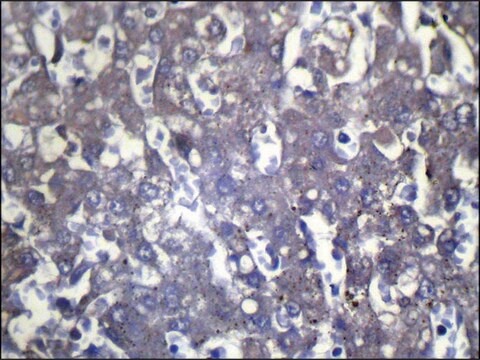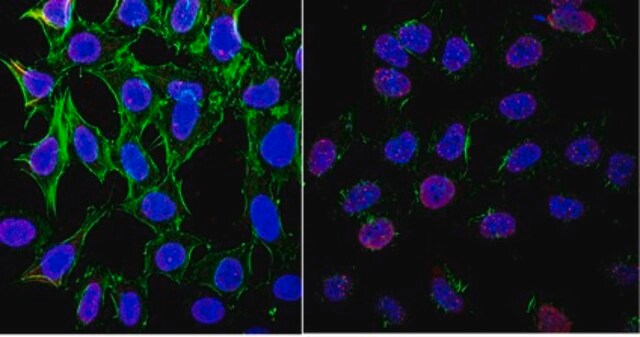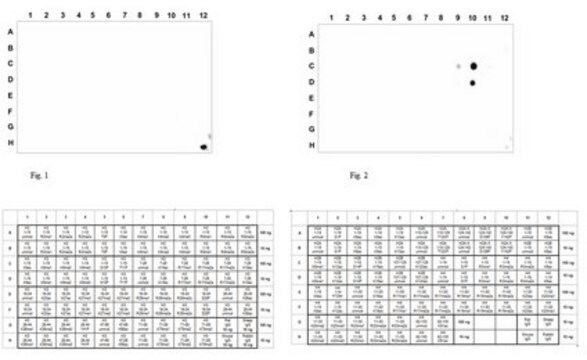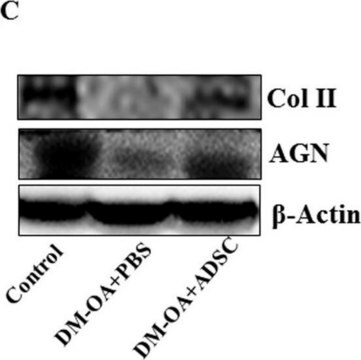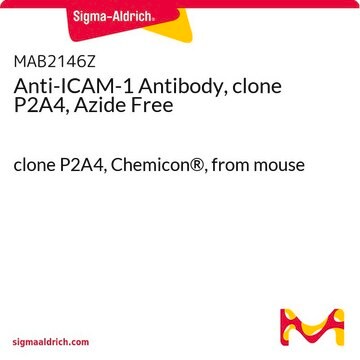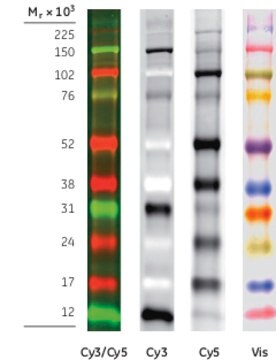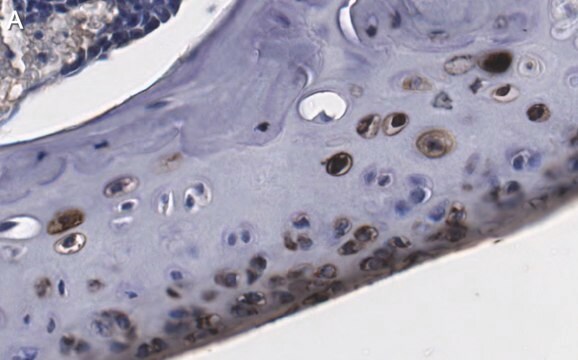MABF946
Anti-H-2K Antibody, clone Y-3
clone Y-3, from mouse
Synonim(y):
H-2 class I histocompatibility antigen, K-B alpha chain, H-2K, H-2K(B), H-2K(K), H-2K(Q), H-2K(R), H-2K(S), Beta-2-microglobulin
About This Item
Polecane produkty
pochodzenie biologiczne
mouse
Poziom jakości
forma przeciwciała
purified immunoglobulin
rodzaj przeciwciała
primary antibodies
klon
Y-3, monoclonal
reaktywność gatunkowa
mouse
metody
affinity binding assay: suitable
flow cytometry: suitable
immunocytochemistry: suitable
immunoprecipitation (IP): suitable
izotyp
IgG2bκ
numer dostępu NCBI
Warunki transportu
ambient
docelowa modyfikacja potranslacyjna
unmodified
informacje o genach
mouse ... H2-K1(14972)
Opis ogólny
Specyficzność
Immunogen
Zastosowanie
Affinity Binding Assay: A representative lot reacted with cell surface murine class I MHC H-2K haplotypes b, k, q, r, s, but not d, in affinity binding assays utilizing 125I-labelled antibody. Clone Y-3 exhibited similar affinity toward seven H-2Kb mutant strains as the wild-type strain (Hämmerling, G.J., et al. (1982). Proc. Natl. Acad. Sci. U. S. A. 79(15):4737-4741).
Flow Cytometry Analysis: A representative lot detected the surface expression of exogenously transfected H-2Kb Y84C mutant among TAP- and tapasin-deficient BL/6 fibroblasts, while little exogenously expressed wild-type H-2Kb was detected on the cell surface in the absence of either TAP or the TAP-binding protein tapasin (Wijeyesakere, S.J., et al. (2015). Proc. Natl. Acad. Sci. U. S. A. 112(41):E5608-5617).
Flow Cytometry Analysis: Clone Y-3 ascites fluid detected an induciton of cell surface H-2K immunoreactivity upon exogenous murine calreticulin (mCRT) expression in the CRT-deficient K42 mouse fibroblast line (Del Cid, N., et al. (2010). J. Biol. Chem. 285(7):4520-4535).
Immunocytochemistry Analysis: A representative lot detected the surface expression of exogenously transfected H-2Kb Y84C mutant among TAP- and tapasin-deficient BL/6 fibroblasts, while exogenously expressed wild-type H-2Kb remained intracelluar in the absence of either TAP or the TAP-binding protein tapasin (Wijeyesakere, S.J., et al. (2015). Proc. Natl. Acad. Sci. U. S. A. 112(41):E5608-5617).
Immunoprecipitation Analysis: A representative lot immunoprecipitated H2-K from a calreticulin-/CRT-deficient mouse embryonic fibroblast (MEF) line transfected to express murine CRT (Wijeyesakere, S.J., et al. (2015). Proc. Natl. Acad. Sci. U. S. A. 112(41):E5608-5617).
Jakość
Flow Cytometry Analysis: 0.1 µg of this antibody detected H-2K immunoreactivity on the surface of one million C57BL/6 mouse splenocytes (H-2 haplotype b).
Opis wartości docelowych
Postać fizyczna
Inne uwagi
Nie możesz znaleźć właściwego produktu?
Wypróbuj nasz Narzędzie selektora produktów.
Kod klasy składowania
12 - Non Combustible Liquids
Klasa zagrożenia wodnego (WGK)
WGK 2
Temperatura zapłonu (°F)
Not applicable
Temperatura zapłonu (°C)
Not applicable
Certyfikaty analizy (CoA)
Poszukaj Certyfikaty analizy (CoA), wpisując numer partii/serii produktów. Numery serii i partii można znaleźć na etykiecie produktu po słowach „seria” lub „partia”.
Masz już ten produkt?
Dokumenty związane z niedawno zakupionymi produktami zostały zamieszczone w Bibliotece dokumentów.
Nasz zespół naukowców ma doświadczenie we wszystkich obszarach badań, w tym w naukach przyrodniczych, materiałoznawstwie, syntezie chemicznej, chromatografii, analityce i wielu innych dziedzinach.
Skontaktuj się z zespołem ds. pomocy technicznej